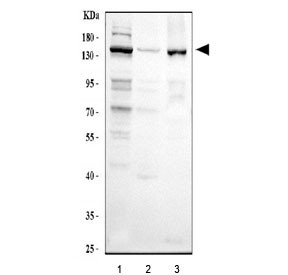Cookie preferences
This website uses cookies, which are necessary for the technical operation of the website and are always set. Other cookies, which increase the comfort when using this website, are used for direct advertising or to facilitate interaction with other websites and social networks, are only set with your consent.
Configuration
Technically required
These cookies are necessary for the basic functions of the shop.
"Allow all cookies" cookie
"Decline all cookies" cookie
CSRF token
Cookie preferences
Currency change
Customer-specific caching
FACT-Finder tracking
Individual prices
Selected shop
Session
Comfort functions
These cookies are used to make the shopping experience even more appealing, for example for the recognition of the visitor.
Note
Show the facebook fanpage in the right blod sidebar
Statistics & Tracking
Affiliate program
Conversion and usertracking via Google Tag Manager
Track device being used

| Item number | Size | Datasheet | Manual | SDS | Delivery time | Quantity | Price |
|---|---|---|---|---|---|---|---|
| NSJ-R32528 | 100 µg | - | - |
3 - 10 business days* |
755.00€
|
If you have any questions, please use our Contact Form.
You can also order by e-mail: info@biomol.com
Larger quantity required? Request bulk
You can also order by e-mail: info@biomol.com
Larger quantity required? Request bulk
0.5mg/ml if reconstituted with 0.2ml sterile DI water. DNA excision repair protein ERCC-6 (also... more
Product information "Anti-CSB / Cockayne Syndrome B / ERCC6"
0.5mg/ml if reconstituted with 0.2ml sterile DI water. DNA excision repair protein ERCC-6 (also CS-B protein) is a protein that in humans is encoded by the ERCC6 gene. This gene encodes a DNA-binding protein that is important in transcription-coupled excision repair. The encoded protein has ATP-stimulated ATPase activity, interacts with several transcription and excision repair proteins, and may promote complex formation at DNA repair sites. Mutations in this gene are associated with Cockayne syndrome type B and cerebrooculofacioskeletal syndrome 1. Alternative splicing occurs between a splice site from exon 5 of this gene to the 3' splice site upstream of the open reading frame (ORF) of the adjacent gene, piggyback-derived-3, which activates the alternative polyadenylation site downstream of the piggyback-derived-3 ORF. The resulting transcripts encode a fusion protein that shares sequence with the product of each individual gene. Protein function: Essential factor involved in transcription-coupled nucleotide excision repair which allows RNA polymerase II-blocking lesions to be rapidly removed from the transcribed strand of active genes (PubMed:20541997, PubMed:26620705, PubMed:16246722). Upon DNA-binding, it locally modifies DNA conformation by wrapping the DNA around itself, thereby modifying the interface between stalled RNA polymerase II and DNA (PubMed:15548521). It is required for transcription-coupled repair complex formation (PubMed:16916636). It recruits the CSA complex (DCX(ERCC8) complex), nucleotide excision repair proteins and EP300 to the sites of RNA polymerase II-blocking lesions (PubMed:16916636). Plays an important role in regulating the choice of the DNA double- strand breaks (DSBs) repair pathway and G2/M checkpoint activation, DNA-dependent ATPase activity is essential for this function (PubMed:25820262). Regulates the DNA repair pathway choice by inhibiting non-homologous end joining (NHEJ), thereby promoting the homologous recombination (HR)-mediated repair of DSBs during the S/G2 phases of the cell cycle (PubMed:25820262). Mediates the activation of the ATM- and CHEK2-dependent DNA damage responses thus preventing premature entry of cells into mitosis following the induction of DNA DSBs (PubMed:25820262). Acts as a chromatin remodeler at DSBs, DNA- dependent ATPase-dependent activity is essential for this function. Remodels chromatin by evicting histones from chromatin flanking DSBs, limiting RIF1 accumulation at DSBs thereby promoting BRCA1-mediated HR (PubMed:29203878). Required for stable recruitment of ELOA and CUL5 to DNA damage sites (PubMed:28292928). Involved in UV-induced translocation of ERCC8 to the nuclear matrix (PubMed:26620705). Essential for neuronal differentiation and neuritogenesis, regulates transcription and chromatin remodeling activities required during neurogenesis (PubMed:24874740). [The UniProt Consortium]
| Keywords: | Anti-CSB, Anti-ATP-dependent helicase ERCC6, Anti-Cockayne syndrome protein CSB, Anti-DNA excision repair protein ERCC-6, CSB Antibody / Cockayne Syndrome B / ERCC6 |
| Supplier: | NSJ Bioreagents |
| Supplier-Nr: | R32528 |
Properties
| Application: | WB |
| Antibody Type: | Polyclonal |
| Conjugate: | No |
| Host: | Rabbit |
| Species reactivity: | human |
| Immunogen: | Amino acids 160-205 (QAATSRDINRKLDSVKRQKYNKEQQLKKITAKQKHLQAILGGAEVK) from the human protein |
| Format: | Purified |
Database Information
| KEGG ID : | K10841 | Matching products |
| UniProt ID : | Q03468 | Matching products |
| Gene ID | GeneID 2074 | Matching products |
Handling & Safety
| Storage: | +4°C |
| Shipping: | +4°C (International: +4°C) |
Caution
Our products are for laboratory research use only: Not for administration to humans!
Our products are for laboratory research use only: Not for administration to humans!
Information about the product reference will follow.
more
You will get a certificate here
Viewed




